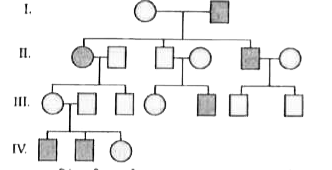The following summaries describe some published research resutls.
Research 1. Wu and Li (1985): The comparative analysis of homologous genes between human and mouse genomens suggests that the evolutionary rate of homologous genes was higher in the mouse lineage than in the human lineage.
Research 2. Smith and Donohe (2008) : The plant families Caprifoliacease, Asclepiadeceae and Lamiaceae are compsed of both herbaceous and arborescent speciers. The comparative analysis of homologous genes between the herbaceous and arborescent species within a single plant family suggests that the evolutionary rate of homologous genes in herbaceous lineages were faster than of arborescent lineages in all three plant familes.
Research 3. Gilman et al. (2009): The comparative analysis of 130 homologous mitochondrial genes between a sister species pari of vertebrates from the temperate region and from the tropical region indicate that the base substituion rates of homologous genes from the tropical region are 1.7 times faster than that of the temperate region.
Based on these studies which of the following statements best describes the common evolutionary processes in plant and animal genes?
The evolutionary rates of genes are accelerated in shot-lived animals and plants.
The evolutionary rates of genes are accelerated in higher animals and plants.
The evolutionary rates of genes are accelerated in animals and plants which lived in higher temperature regions.
Direct comparisons of homologous genes between animals and plants show that the plants evolve faster than animals.
The correct Answer is:A
Shor-lived species with quick generation replacement usually evolve at a faster rate than do large, long-lived species. This is because new genetic variations. Normally appear in each generatin as a consequency of mutations in sex cells. Those variations may be selected for or against depending on the environment at the time. As a consequence, quicker reproductive cycles generally result in speeded up sepcies divergence. Speciation is genrally a functionof time, unlike temperate regions which were subjected to frequent glaciations in the past, tropical latitudes have remained relatively undisturbed for millions of years and thus, have a long evolutionary time for species diversification.
Topper's Solved these Questions
Similar Questions
Which of the following is not a cause of natural pollution ?
View SolutionWhich of the following factors affect human health ?
(i) Infections
(ii) Silent mutations
(iii) Life style
(iv) Genetic disorders
View SolutionRead the given statements and select the correct option
Statement 1 : Transgenic mouse is termed as super mouse because it its twice bid in size than the normal mouse
Statement 2 : In uper mouse the gene for human growth factor has been introduced and expressed
View SolutionA 'giant mouse' in the laboratory can be produced by gene:
View SolutionThe homologous genes are separated at
View SolutionA 'giant mouse' in the laboratory can be produced by gene:
View Solutionनिम्नलिखित मानव वंशावली में, भरे हुए संकेत प्रभावित व्यक्ति का निरूपण करते हैं। दी गई वंशावली के प्रकार पहचानिए

View SolutionRead the given statements and select the correct option
Statement 1: Transgenic mouse is termed as 'super mouse' because it is twice big in size than the normal mouse
Statement 2: In 'super mouse', the gene for human growth factor has been introduced and expressed.
View SolutionThe following summaries describe some published research results. Research 1. Wu and Li (1985): The comparative analysis of homologous genes between human and mouse genomes suggests that the evolutionary rate of homologous genes was higher in the mouse lineage than in the human lineage. Research 2. Smith and Donohe (2008) : The plant families Caprifoliacease, Asclepiadeceae and Lamiaceae are compsed of both herbaceous and arborescent speciers. The comparative analysis of homologous genes between the herbaceous and arborescent species within a single plant family suggests that the evolutionary rate of homologous genes in herbaceous lineages were faster than of arborescent lineages in all three plant familes. Research 3. Gilman et al. (2009): The comparative analysis of 130 homologous mitochondrial genes between a sister species pair of vertebrates from the temperate region and from the tropical region indicate that the base substitution rates of homologous genes from the tropical region are 1.7 times faster than that of the temperate region. Based on these studies which of the following statements best describes the common evolutionary processes in plant and animal genes?
View SolutionRead the given statements and select the correct option
Statement 1 : Transgenic mouse is termed as super mouse because it its twice bid in size than the normal mouse
Statement 2 : In uper mouse the gene for human growth factor has been introduced and expressed
View SolutionThe conclusion of the research work printed in the plow itself is briefly shown below. Research-1 Wu and Li (1985) -Comparative analysis of the genome of homologous genes between humans and mice suggests that the growth rate of homologous genes is higher in the rat lineage than in humans. Research-2 Smith and Donohi (2008) - The plant is made up of total caprifoliaceae, Asclepidaceae and Lamiaceae, both Shacko and Araborissant species. In a plant, the growth rate of the homologous genes of Herbaceous and Araborissant was faster in the Herbaceous lineage than in the Araborissant lineage of all three plant families. Research-3 Gillman and Assistant (2009) - A comparative analysis between 130 homologs of mitochondrial genes of a sister species pair of vertebrates from the temporal and tropical region revealed that homologous genes of the tropical region compared to the temporal region. The base displacement rate was 1.7 times faster. Which of the following statements correctly describes the same developmental process in plant genes and animal genes based on these studies?
View SolutionThe most accepted lineage in human development is-
View Solutionবিশ্বের মানবসম্পদের স্বাস্থ্য নিয়ে গবেষণা করে―
View SolutionFill in the blanks: _____ researches human health.
View SolutionA 'giant mouse' in the laboratory can be produced by gene:
View Solution
